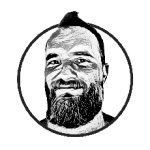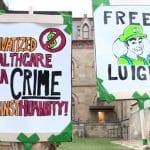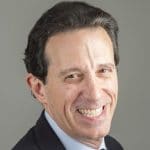The Center for Connected Health’s 2008 Symposium was held in Boston on October 27-28, 2008. I gave a talk entitled, “Participatory Medicine: How User-Generated Media are Changing American Attitudes and Actions, Online and Off.” As always, the conversations I had with people after the speech were the best part of the event.
Lena Sorenson, RN, PhD, an Associate Professor at the MGH Institute of Health Professions, pointed out that my 7-word challenge focuses on doctors and should instead focus on “providers” (doctors, yes, but also nurses, therapists, and every other health care professional who cares for people). I updated my slides before uploading them to the Pew Internet site to reflect that important change.
Another line in my speech was a reading of the crowdsourced definition of participatory medicine. Sorenson suggested (as have John Grohol & Charlie Smith, among others) that we change the term “participatory medicine” to “participatory health care.” What do people think about that? My instinct is to choose the catch phrase with the fewest words, but maybe I’m too drawn to bumper-sticker haikus.
Some other ripples and quotes:
During Clay Shirky‘s (awesome) presentation of how health care is being swept along by the current of social media, Judy Phalen of the Health e-Technologies Initiative asked a question about the uneven access we continue to see in the U.S. (and the hive of information that offline Americans are missing out on). She cited my points regarding the “low-tech majority” but I wished that I had had time to dive deep into the degrees of access data we have on safety-net populations since there are nuances. Shirky’s advice is to grab a paddle and try to steer yourself and your organization like a kayak in the current since there is no way to just put on the brakes and stop the movement. To extend that, Phalen (and others) are pointing out that there don’t seem to be enough paddles to go around.
Stead Burwell of Diabetic Connect was another person who talked about reaching out beyond the Tech Elite, which is so important in the service of people with diabetes. I’m fascinated by the work that he’s doing, along with his co-panelists Brian Loew of Inspire and Ben Heywood of PatientsLikeMe (whose demos were top-notch, maybe thanks to the dress rehearsal at Health 2.0) In a hallway chat, Stead and I agreed that this was a conference worth the travel time (and he came all the way from Utah!).
Since I end a lot of talks with the advice to “go mobile,” I thought I’d better attend the Wireless and Mobile Services panel, which focused quite a bit on the use of text and mobile chat to connect providers, patients and information. Robert Schwarzberg of Sensei got off what I thought was the best line: “People are so proud of their iPhones it’s like they hatched them” (smaller is not better anymore). But then Syam Buradagunta of the blue sky collaborative delivered this zinger during the Q&A: “I come from outside the health industry and I have to tell you, text is not cutting-edge.”
Howard Lewine of Harvard Medical School had (like me) run out of business cards by the end of the first day of the conference, but what I really wished I had on hand was a copy of Diana Forsythe’s book, Studying Those Who Study Us. He said that one of the more popular topics on the site he manages is about eyelid twitching — and people mainly want to know if it’s some early signal of a dread condition (it’s not). Forsythe wrote about how the number one question from recently-diagnosed migraine sufferers is “Am I going to die from this?” But the designers of a migraine information kiosk (yes, it was the 80s) didn’t ask patients what they wanted to know. They asked one doctor what he thought patients should know about their condition. Just checking: are we over that attitude yet?





Medicine has such a negative connotation. Maybe rather than Health Care….Participatory Health. Health Care is such a large term that cries out “institutional.”
It was indeed a great conference. I enjoyed meeting everyone associated with e-patients.net.
The key for Participatory Health to impact our society in a meaningful way is to have new solutions engage the people in our culture who are sick…and do so in a way that is cost effective. Not to engage the people who like to engage with new solutions.
I just remembered a key point from my conversation with Stead: I’ve helped make famous the notion that health is one of the most popular topics on the internet with our “80% of internet users” data. But Stead pointed out that the number drops drastically if you ask people if they have looked online for health info in the past year, month, etc. I’m going to work harder to bring our other health number into the spotlight: just 7% of internet users look online for health information on a typical day.
When people are sick we deal with medicine. There is just no way around it. That’s why we call it Participatory Medicine and not Participatory Health.
We are also focused on explaining to doctors why it is beneficial for them to join the movement. We cannot do that if we call it Participatory Health.
But I do understand John’s Grohol mention of mental health and Lena Sorenson’s remarks about the supposedly wider meaning of healthcare.
As a member of the committee to start the Journal of Participatory Medicine, I’ve been part of an ongoing debate regarding the nomenclature of PM versus PH. The thought behind “Medicine” over “Health”, in terms of the journal, is that a major aim is to draw physicians and other healthcare professionals into the equation. Patients are already there, most professionals are not. The latter group relates much more strongly to the term medicine – it’s what they studied, what they practice, and is integral to what they read (JAMA, NEJM, BMJ, etc). A major aim of the journal is to legitimize PM by providing evidence of improved outcomes (though non-EBM-based patient stories, reviews, and analyses will be presented as well), so we want a title that draws in the professionals and resonates strongly with them.
As described in Wikipedia, ‘medicine’ is derived from the latin medicina which means the art of healing. Its commonly accepted meaning today is “a range of health care practices evolved to maintain and restore health by the prevention and treatment of illness” thus covering the gamut of health concerns (outside of policy of course).
I do recognize that formal definitions are not the sole concern here; perceptions are critical. What say others on the subject?
Medicine? Healthcare? We’re asking that from inside the pre-transformation world as it starts cracking open, as some of us are crawling out and far more others have started crawling in.
I myself only crawled in 9 months ago and am now trying to shine flashlights from the inside to the outside.
We won’t have the answer until the “uncognoscenti” have crawled in and started “neo-scenti-ing.” Whenever that happens (as when AOL users swarmed CompuServe out of existence) the previous guard usually doesn’t like it, but we know how THAT ended: CompuServe users said “No no no, you guys are doing it all wrong,” they were vastly outnumbered, to the point where AOL *bought* CompuServe.
To the people I speak with, who are completely new to “e”, it’s health care, before during and after illnesses. The distinction between that and medicine doesn’t exist.
But I’m only committed to wording insofar as it furthers a conversation for change. And the only word I really care about in this case is participatory. Because for providers and patients alike, that’s a really new idea that requires rethinking a lot of things.
This is reminiscent of a debate we had about 10 years ago between the proponents of the word telemedicine and telehealth. The telehealth proponents won out for a while, but now both terms seem a bit passe. I fully admit to a clinician’s bias, but i think participatory medicine has a more robust ring to it. More importantly is that we continue to write about, talk about and ‘participate’ in this very important transfomation of health care. someday soon, whatever name we choose today will seem quaint.
Warning: Attempt to read property "avatar_manager_avatar_type" on bool in /home/pmed/public_html/wp-content/plugins/avatar-manager/avatar-manager.php on line 1092
Well, Joe Kvedar! What a pleasure to see you here!
Thanks for the historical perspective. When you were discussing that, it all seemed “not for me.” Rather short-sighted of me, as it turned out. :)
Welcome, Joe. May our conversations here be worth your time.
I just viewed Susannah’s slides. This is a rare moment because she’s a “we don’t need no stinkin’ PPT” person – but it turns out she’s good at it. A short deck, worth watching.
Great notes Sussanna. The naming debate is an important one. It underscores the lack of identity that plagues health care/medicine delivery in a forum that’s not face-to-face. People outside of the ivory towers simply don’t know what to call it or that it exists for that matter. I’m not talking about health information but actual health care delivery… I’m still waiting for that “rogue” start-up company that makes an undeniable case for the New Health Care System like Napster and University of Pheonix did for the music and higher education respectively.
Warning: Attempt to read property "avatar_manager_avatar_type" on bool in /home/pmed/public_html/wp-content/plugins/avatar-manager/avatar-manager.php on line 1092
I’ve also been part of the ‘naming’ discussions at the Journal, and feel strongly that the name Journal of Participatory Medicine is more likely to have more influence with the people and institutions that most need the Journal. I feel the same way about the Society for Participatory Medicine. And calling the discipline Participatory Medicine.
But I like calling the lifestyle Participatory Health and perhaps even calling the people involved Health Participants.
I understand the many negative connotations the word medicine can have, but I am hoping to help redeem the word with this wonderful new pairing and this approach to Health.
You are right – participatory is a key message.
I was a bit down at the end of the first day after listening to several speakers talking about physician-driven systems, the paramount importance of xHR, and professionals exchanging data with each other. “If we save our own time then better patient care naturally follows”.
The technology enables a much closer contact between client and professional, better educated clients, and more individualized “concordant” care. Participation is the central message imho.
I will be using “participatory health” to describe where we should be going. Thanks, Stead Burwell.
Sarah Greene’s (comment from 10/30) in defense of using “medicine” reminds me of an Art Buchwald column where he claimed “diet” came from the verb “to die.” In fact, the root of diet means manner of living or to lead one’s life.
Talking about diet is a good segue to diabetes and the issue of the Tech Elite. Diabetes is an equal opportunity disease. Well, not precisely since some populations are more predisposed than others. But it is one condition where all patients would benefit from ease of accesss to Participatory [???], such as with Diabetic Connect.
Back to the issue of the MEDICINE vs. HEALTH CARE. Who’s the audience? “Medicine” speaks to physicians but the products are for patients. Let’s go to the source and ask patients which they prefer or if they feel other words resonate with them. Perhaps a survey on a patient website. Let’s not forget to ask those who are not currently plugged in.
Thanks so much! – I have bad reflexes. I was once run over by a car being pushed by two guys. Woody Allen Born 1935